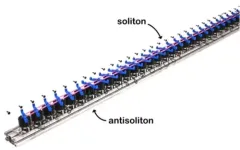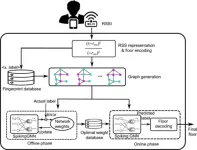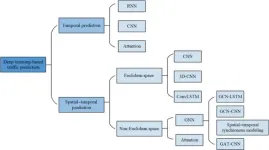Recent developments at MD Anderson offer insights into a combination therapy that slows pancreatic cancer progression, an all-oral treatment for older patients with acute myeloid leukemia (AML) unable to receive intensive chemotherapy, novel targets to protect against osteoporosis and bone metastasis, the generation of synthetic positron emission tomography (PET) scans from more easily accessible and safer computed tomography (CT) scans to improve lung cancer diagnosis, a new model for studying pancreatic cancer progression and metastases, molecular targets for hematopoietic stem cell regulation, and insights into how AML suppresses the STING antitumor pathway via gene splice variants.
Combination therapy slows pancreatic cancer progression in preclinical models
Galectin-3 (GAL3), which regulates cell proliferation and the function of various immune cell populations, is highly expressed by myeloid and pancreatic cancer cells. However, its role in the pancreatic tumor microenvironment remains unclear. To provide further insights, researchers led by Yang Chen, Ph.D., generated in vivo models of pancreatic cancer with GAL3 genetically deleted in both cancer and myeloid cells. Deleting GAL3 inhibited pancreatic cancer progression and prolonged survival in these models. Single-cell sequencing revealed that GAL3 deletion enriched antitumor myeloid cells and it also resulted in upregulation of CXCL12 as a possible compensatory mechanism for cancer progression. Inhibiting both CXCL12 and GAL3 enhanced anti-PD1 immunotherapy treatment response, highlighting the combination’s potential as a therapeutic strategy for patients with pancreatic cancer. Learn more in Gastroenterology.
Fully oral regimen found safe and effective for older or unfit patients with AML
Patients with acute myeloid leukemia (AML) who are ineligible for intensive chemotherapy have limited therapeutic options. Previous research suggests hypomethylating agents combined with venetoclax are effective for this group, but the hypomethylating agent must be given via parenteral administration, or intravenal injection outside of the digestive tract. In a Phase II study, researchers led by Farhad Ravandi, M.D., and Alexandre Bazinet, M.D., evaluated an oral combination of decitabine and cedazuridine (ASTX727) plus venetoclax in 62 patients with newly diagnosed and relapsed/refractory AML who had a high risk of poor outcomes. Newly diagnosed patients and relapsed/refractory patients had overall response rates of 64% and 46%, respectively, with manageable side effects. The study suggests the oral combination is safe and active in older patients with AML who are ineligible for chemotherapy, providing a more convenient method of treatment to improve quality of life. Learn more in The Lancet Haematology.
Preclinical study identifies targets against osteoporosis and bone metastasis
Osteoclast cells are responsible for the resorption of bone structure and minerals, and their dysregulation is associated with osteoporosis, or decreased bone mineral density. Building upon previous work showing that MALAT1, a long noncoding RNA (lncRNA), suppresses breast cancer metastasis, Li Ma, Ph.D., and colleagues noted that a specific mutation in MALAT1 was associated with low bone mineral density and sought to determine the role of MALAT1 alternations in bone diseases. MALAT1 deficiency led to osteoporosis and more severe bone metastases of melanoma and mammary tumor cells in lab models, but was reversed when MALAT1 was re-introduced. Single-cell analysis of bone samples from patients showed that reduced MALAT1 expression in pre-osteoclasts and osteoclasts was associated with osteoporosis and metastatic bone lesions. The researchers discovered that MALAT1 suppresses osteoclast differentiation and protects against metastasis by binding and inhibiting a specific target, TEAD3, suggesting TEAD inhibitors could make up for the reduction of MALAT1. The study reveals the fundamental roles of MALAT1 lncRNA in physiological and pathological processes and identifies TEAD inhibitors as a potential approach to treat osteoporosis and bone metastasis. Learn more in Nature Communications.
Synthetic PET scans derived from CT imaging offer promising advance in the diagnosis and prognosis of lung cancer
While positron emission tomography (PET) scans are highly effective in detecting lung cancer, their accessibility is limited, especially in low-income regions. To address this issue, researchers led by Jia Wu, Ph.D., Jianjun Zhang, M.D., Ph.D., and Carol Wu, M.D., leveraged deep learning techniques to generate synthetic PET scans from more widely available computed tomography (CT) scans. Radiologists validated the imaging quality and tumor contrast between the synthetic and actual PET images, and the researchers demonstrated the superior diagnostic capabilities of these synthetic PET scans compared to the original CT scans. Synthetic PET scans also required lower radiation exposure compared to conventional PET scans, making them a potentially safer option for screening high-risk lung cancer patients. This innovation holds promise for improving diagnostic accuracy and accessibility, particularly in resource-constrained settings. Learn more in Cell Reports Medicine.
Clonal dominance defines metastatic dissemination in pancreatic cancer
Cancers progress and continuously adapt, making them challenging to treat. As cancer cells replicate and evolve, distinct cellular lineages, or subclones, compete to become dominant and drive tumor progression. Researchers led by I-Lin Ho, Ph.D., and Andrea Viale, M.D., developed a new model for pancreatic cancer to study subclone evolution within tumors and metastases. They found that subclones undergo continuous fluctuations in representation during tumor growth, even in the absence of any external treatment, with dominant subclones suddenly collapsing and being replaced by others. Most of these lineages were found in distant organs, even in tumors that did not metastasize. This suggests tumor dissemination is a nonspecific, widespread behavior of tumor cells and challenges the current metastatic cascade model. The results show that the fitness of a subclone within the primary lesion determines whether it disseminates and initiates a tumor at a secondary site. The researchers identified a specific molecular signature for a subset of cells within the tumor capable of sustaining tumor metastases, which could be a potential tool for patient risk stratification. Learn more in Science Advances.
Preclinical study uncovers role of STAT3 in preserving hematopoietic stem cells
Hematopoietic stem cells (HSCs) typically differentiate to replenish peripheral immune cells and undergo self-renewal to retain an adequate supply of parent cells, but the mechanisms regulating HSCs and preventing uncontrolled dysfunction are poorly understood. The STAT3 protein facilitates the maturation of immune system cells, but its role in HSCs is difficult to study because STAT3 deficiency or deletion in hematopoietic cells can induce systemic inflammation, impacting HSC activity. To address this, researchers led by Stephanie Watowich, Ph.D., developed mixed bone marrow chimeric models with inducible STAT3 deletion in approximately 20% of the hematopoietic compartment, avoiding systemic inflammation. STAT3-deficient HSCs were unable to sustain hematopoiesis following transplantation and showed increased, uncontrolled activation of interferon (IFN) signaling pathways. Blocking the type I IFN receptor suppressed excessive proliferation, DNA damage, autocrine immune signaling and p53 activation in HSCs. The study identified STAT3’s role in preserving HSC amounts by inhibiting this uncontrolled IFN response, providing insights for novel approaches to target STAT3 inhibition in diseased or defective HSCs to improve treatment response. Learn more in Leukemia.
Direct manipulation of STING gene suppresses antitumor pathway in AML
The stimulator of interferon genes (STING) pathway, which induces interferon (IFN) immune proteins, facilitates the antitumor response in many diseases, but is often suppressed in acute myeloid leukemia (AML). However, little is known about the mechanisms by which tumors suppress this STING activation. Researchers led by Michael Curran, Ph.D., found that using potent agonists to activate the STING pathway in AML cell lines led to poor induction of IFNs. Further investigation by cloning and sequencing the STING gene in each cell line uncovered two non-functional splice variants, which were proven to be unresponsive to any of the agonists. These variants are also dominant inhibitors that would be unresponsive even if a patient had a functional version of the gene on the other chromosome. These results suggest that, in AML, the STING pathway is regulated via direct manipulation of the STING gene and that the AML tumor microenvironment should be targeted to activate this pathway and improve the immune response. Learn more in Cancer Research Communications.
Read this press release in the MD Anderson Newsroom.
- 30 -
END





